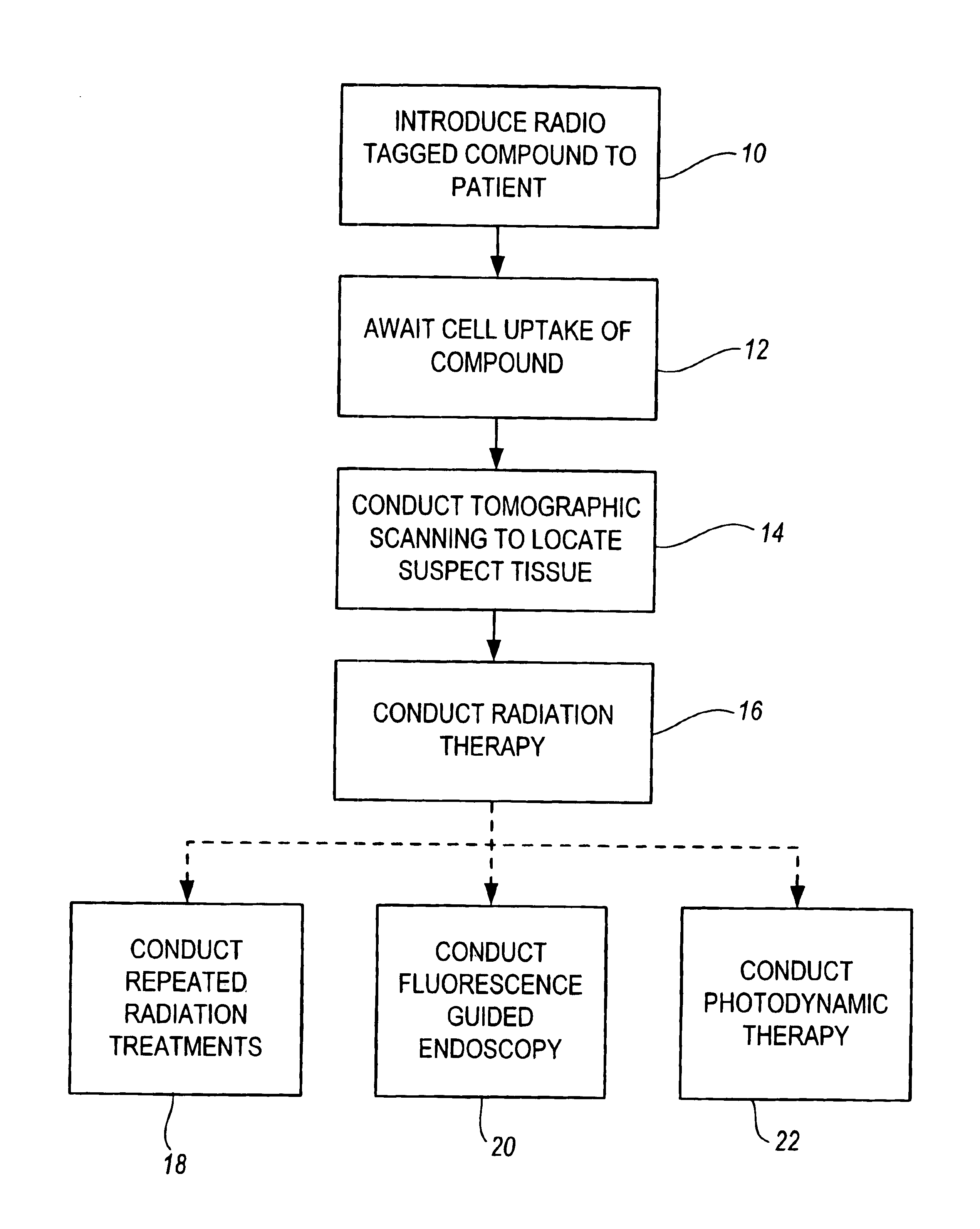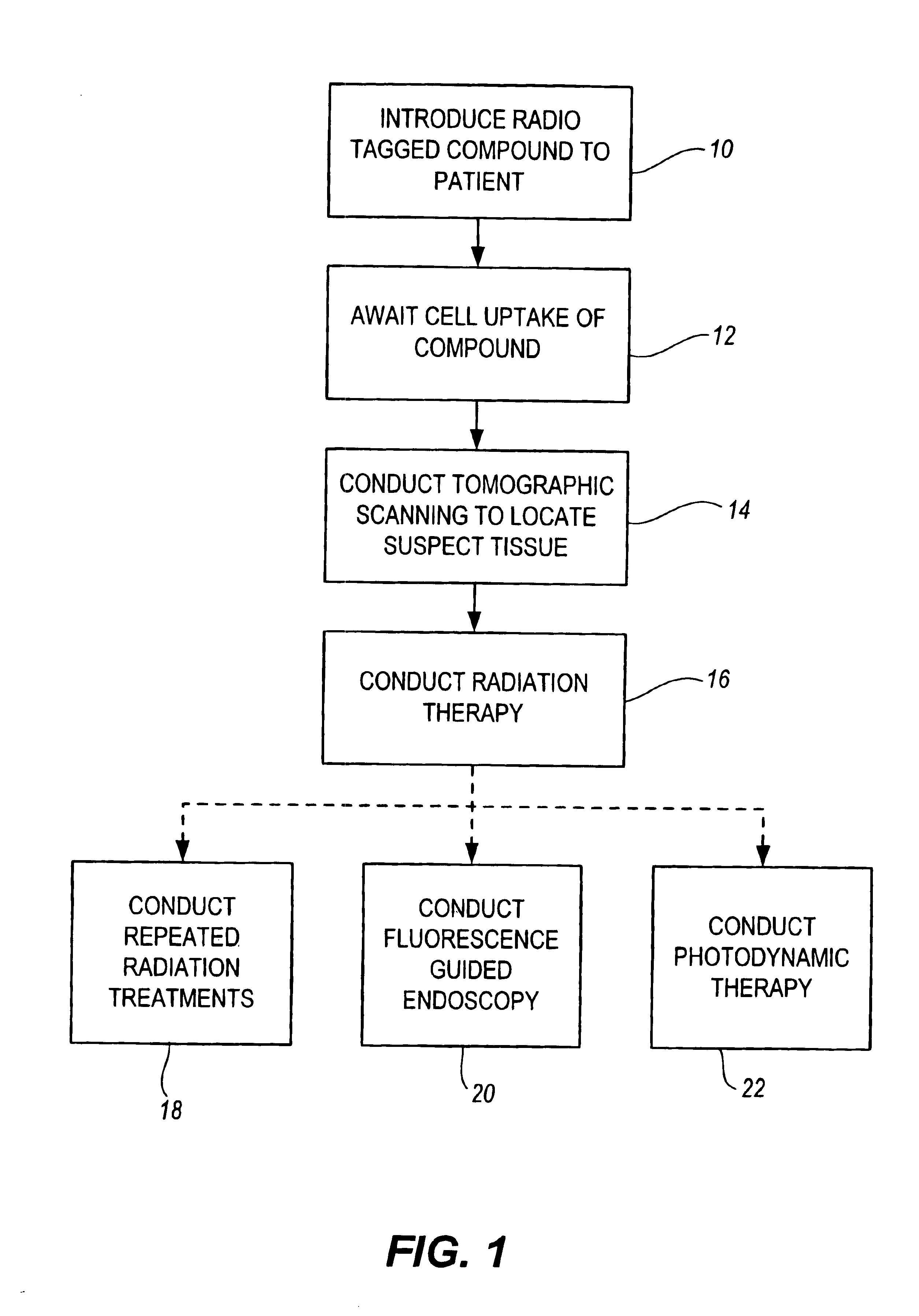Method of using metaloporphyrins for treatment of arteriosclerotic lesions
a metaloporphyrin and arteriosclerosis technology, applied in the field of radiopharmaceuticals, can solve the problems of inability to deliver to any significant depth in tissue, inability to effectively reach arteriosclerosis lesions, and limited effect of such treatmen
- Summary
- Abstract
- Description
- Claims
- Application Information
AI Technical Summary
Benefits of technology
Problems solved by technology
Method used
Image
Examples
Embodiment Construction
[0018]In addition to use of known porphyrins, a number of additional photo-sensitive compounds may be complexed with selected metals. These additional compounds include, without limitation, 5-amino levulenic acid (5-ALA), protoporphyrin IX, TCPP, hematoporphyrin derivative, photofrin, photofrin II, uroporphyrin, coproporphyren, tetraphenylporphinesulfonate (TPPS) and tetraporphen (4, N-methylulpyridil) (TMPP). Each of these photosensitive compounds, to include the below listing of metaloporphyrins are available from Frontier Scientific (formerly Porphyrin Products), of Logan Utah. These commercially available metaloporphyrins are further treated to convert the elemental metals to radioactive isotopes. Conversely, these radioactive metaloporphyrins useful as radiopharmaceutical agents may be formed by purchasing or isolating radioactive metals of interest which are then combined with the desired porphyrin molecules to form radioactive metaloporphyrins. U.S. Pat. No. 5,391,547 is here...
PUM
| Property | Measurement | Unit |
|---|---|---|
| radioactive | aaaaa | aaaaa |
| tomographic imaging | aaaaa | aaaaa |
| positron emission tomography | aaaaa | aaaaa |
Abstract
Description
Claims
Application Information
 Login to View More
Login to View More - R&D
- Intellectual Property
- Life Sciences
- Materials
- Tech Scout
- Unparalleled Data Quality
- Higher Quality Content
- 60% Fewer Hallucinations
Browse by: Latest US Patents, China's latest patents, Technical Efficacy Thesaurus, Application Domain, Technology Topic, Popular Technical Reports.
© 2025 PatSnap. All rights reserved.Legal|Privacy policy|Modern Slavery Act Transparency Statement|Sitemap|About US| Contact US: help@patsnap.com


